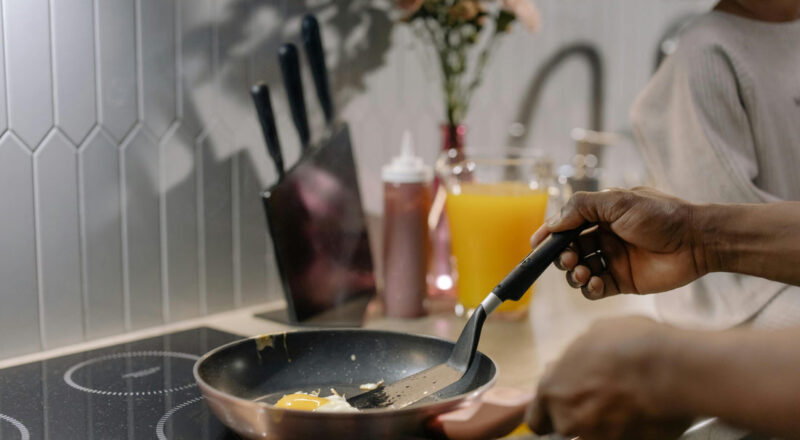In the world of kitchenware, understanding the cast iron pan weight for induction cooking is vital. Whether you’re a professional chef or a home cook, using the right cookware can make all the difference. Induction cooking has gained popularity due to its efficiency and precision, and cast iron pans are often a top choice for this type of cooking. But why is the weight of a cast iron pan so crucial for induction cooking? Let’s delve into the details.

Why Cast Iron is Ideal for Induction Cooking
Cast iron pans are known for their excellent heat retention and even heating, which are essential qualities for induction cooking. Induction cooktops use electromagnetic fields to heat the pan directly, rather than the cooktop surface. This method requires pans that are magnetic and have a flat bottom, like cast iron.
Understanding the Importance of Weight
The weight of a cast iron pan plays a significant role in its performance on an induction cooktop. Heavier pans tend to sit more securely on the cooktop, ensuring better contact and heat transfer. This stability helps in achieving even cooking results and prevents issues like uneven browning.
Factors Affecting Pan Weight
Several factors influence the weight of a cast iron pan, including the size, thickness, and design of the pan. Larger pans are naturally heavier, but the thickness of the material also adds to the weight. A thicker pan may provide better heat retention but can be cumbersome to handle.
Choosing the Right Cast Iron Pan for Induction
When selecting a cast iron pan for induction cooking, it’s essential to consider both the weight and size. A pan that is too heavy might be challenging to maneuver, while a lighter pan may not provide the desired stability. It’s about finding the right balance that suits your cooking needs.
Benefits of Using Cast Iron on Induction
Using cast iron on an induction cooktop offers numerous benefits, including energy efficiency and precise temperature control. The heat is distributed evenly across the pan, reducing the chances of cold spots. This uniform heating is ideal for cooking delicate dishes that require consistent temperatures.
Common Challenges and Solutions
While cast iron is excellent for induction cooking, it can present some challenges, such as becoming smoky or not heating evenly. These issues can often be resolved by ensuring the pan is clean and properly seasoned. For more detailed solutions, you can visit cast iron becoming smoky problems.
Caring for Your Cast Iron Pan
Proper care and maintenance are crucial to ensure the longevity and performance of your cast iron pan. Regularly seasoning the pan helps maintain its non-stick surface and prevent rusting. Additionally, cleaning the pan correctly after each use is essential to keep it in top condition for induction cooking.
Seasoning Your Pan
Seasoning is a process of applying a layer of oil to the pan and heating it, creating a non-stick surface. This layer also protects the pan from moisture and prevents rusting. Regular seasoning will enhance the cooking experience and prolong the life of your pan.
Cleaning and Maintenance Tips
After cooking, allow the pan to cool before cleaning it to avoid thermal shock. Use warm water and a soft brush to remove food residues, and dry the pan thoroughly to prevent rust. Avoid using harsh detergents or putting the pan in the dishwasher.
Comparing Cast Iron with Other Cookware
While cast iron is a popular choice for induction cooking, it’s essential to compare it with other cookware materials like stainless steel and non-stick pans. Each material has its advantages and disadvantages, depending on the cooking method and personal preferences.
Cast Iron vs. Stainless Steel
Both cast iron and stainless steel are compatible with induction cooktops. However, cast iron offers better heat retention, while stainless steel is lighter and easier to handle. The choice between the two depends on the specific cooking tasks and comfort level.
Cast Iron vs. Non-Stick Pans
Non-stick pans are convenient for quick cooking and easy cleaning, but they lack the durability and heat retention of cast iron. For induction cooking, cast iron is preferred for dishes that require high heat and long cooking times.
FAQs
What is the ideal weight for a cast iron pan on induction?
The ideal weight varies depending on the size and design of the pan. Generally, a pan that is heavy enough to stay stable on the cooktop is preferred.
Can I use a lightweight cast iron pan on induction?
Yes, but it may not provide the same level of stability and heat retention as a heavier pan.
How do I prevent my cast iron pan from smoking on induction?
Ensure that the pan is clean and well-seasoned, and avoid overheating it. For more tips, visit cast iron not heating evenly.

Conclusion
Understanding the cast iron pan weight for induction is crucial for achieving the best cooking results. By choosing the right pan and maintaining it properly, you can enhance your cooking experience on an induction cooktop. For more information on how to use cast iron over any heat source, check out this external guide.
This article contains affiliate links. We may earn a commission at no extra cost to you.

